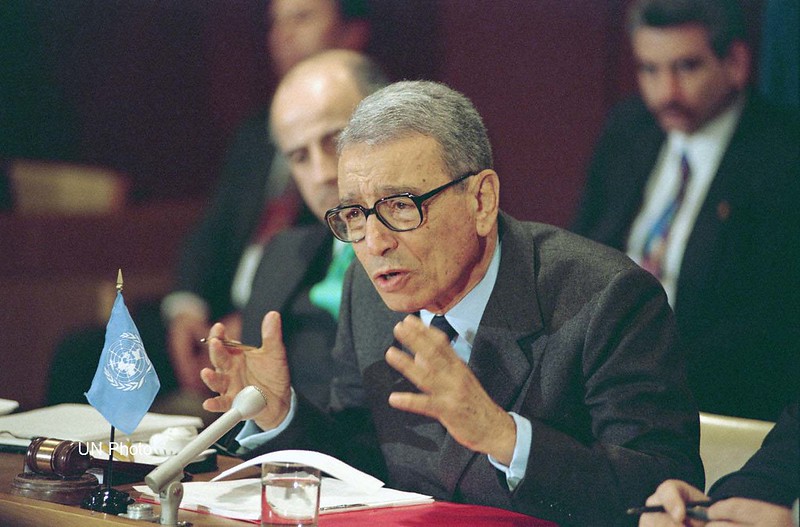By Michael Theodoulou
In August 1992, the UN Secretary General, Boutros Boutros-Ghali, presented the leaders of the Greek and Turkish Cypriot communities with a “Set of Ideas” that envisaged Cyprus reunited as a bi-communal, bi-zonal federation with a single, indivisible sovereignty.
The proposals were based on the 1977 and 1979 High Level Agreements but were far more comprehensive and were endorsed by the UN Security Council. Boutros-Ghali also submitted a map outlining a reduction of the island’s territory under Turkish Cypriot control from 37 cent per cent to 28.2 per cent. It included the return of Morphou and Varosha to the Greek Cypriots.
There would be unrestricted freedom of movement as soon as the federal republic was established. The rights to freedom of settlement and to property would be “implemented after the resettlement process arising from the territorial adjustments has been completed”. These rights would be regulated by the federated states “in a manner to be agreed upon during the transitional period consistent with the federal constitution”.
Security would rest on a continuation of the 1960 Treaty of Guarantee which made Britain, Turkey and Greece guarantor powers. There would be a reduced presence of numerically balanced Greek and Turkish troops and an international peacekeeping force.
Detailed analysis of the Ghali “Set of Ideas”
The federal government would have only those powers specified in a settlement, allowing a large degree of autonomy for the island’s two component parts.
Similar to the 1960 constitution, the executive would have a Greek Cypriot president, a Turkish Cypriot vice-president and a Council of Ministers with a 7:3 ratio of Greek Cypriots and Turkish Cypriots.
Cyprus Mail’s obituary of Boutros Ghali
There would be two houses of parliament and separate majorities of Greek Cypriot or Turkish Cypriot representatives could be requested on some matters. The judiciary would be composed of an equal number of judges from each community.
President George Vassiliou, the Greek Cypriot leader, accepted the Set of Ideas as a basis for negotiations. Rauf Denktash, the Turkish Cypriot leader, said he could accept 90 per cent of what was proposed but was strongly opposed to its remaining parts. He rejected Boutros-Ghali’s map and objected to EU membership for Cyprus until Turkey was also a member.
Negotiations were suspended for the Greek Cypriot presidential elections in February 1993. These resulted in a narrow victory for Glafcos Clerides, who had been critical of the “Set of Ideas”. Talks on these were discontinued after a June 1993 EU Commission report on Cyprus’s eligibility for membership met strong Turkish resistance.
Instead, through the rest of 1993 until mid-1994, Boutros-Ghali attempted to clinch a deal on a major package of confidence-building measures. The most significant of these was the return of the tourist ghost town of Varosha to the Greek Cypriots and the re-opening of Nicosia Airport for use by both communities.
This initiative finally petered out in the spring of 1994, with Butros-Ghali blaming Denktash. He said that the UN Security Council “was facing again a familiar scenario: the absence of agreement due essentially to a lack of political will on the Turkish Cypriot side”.


